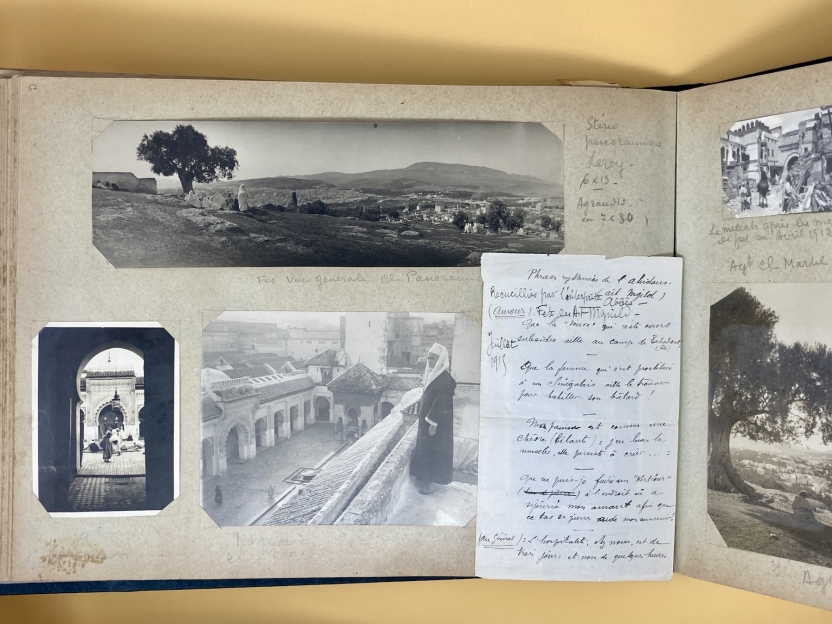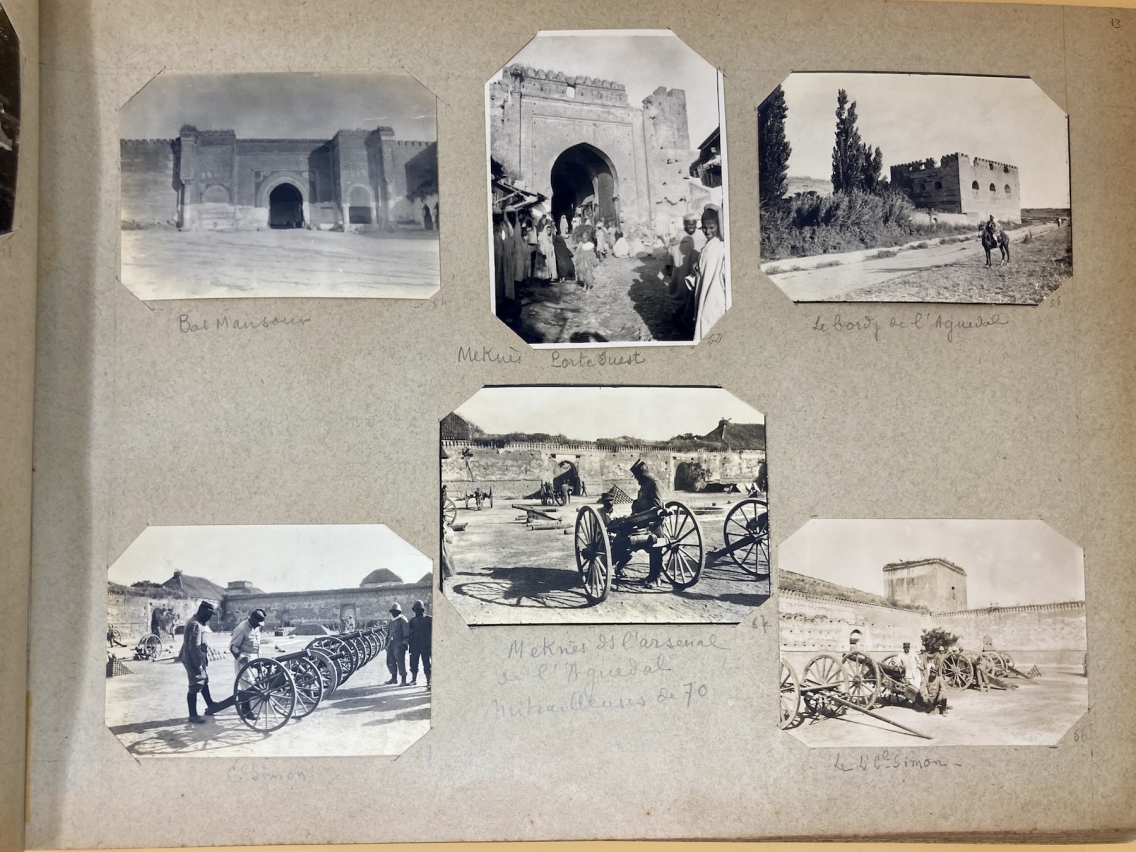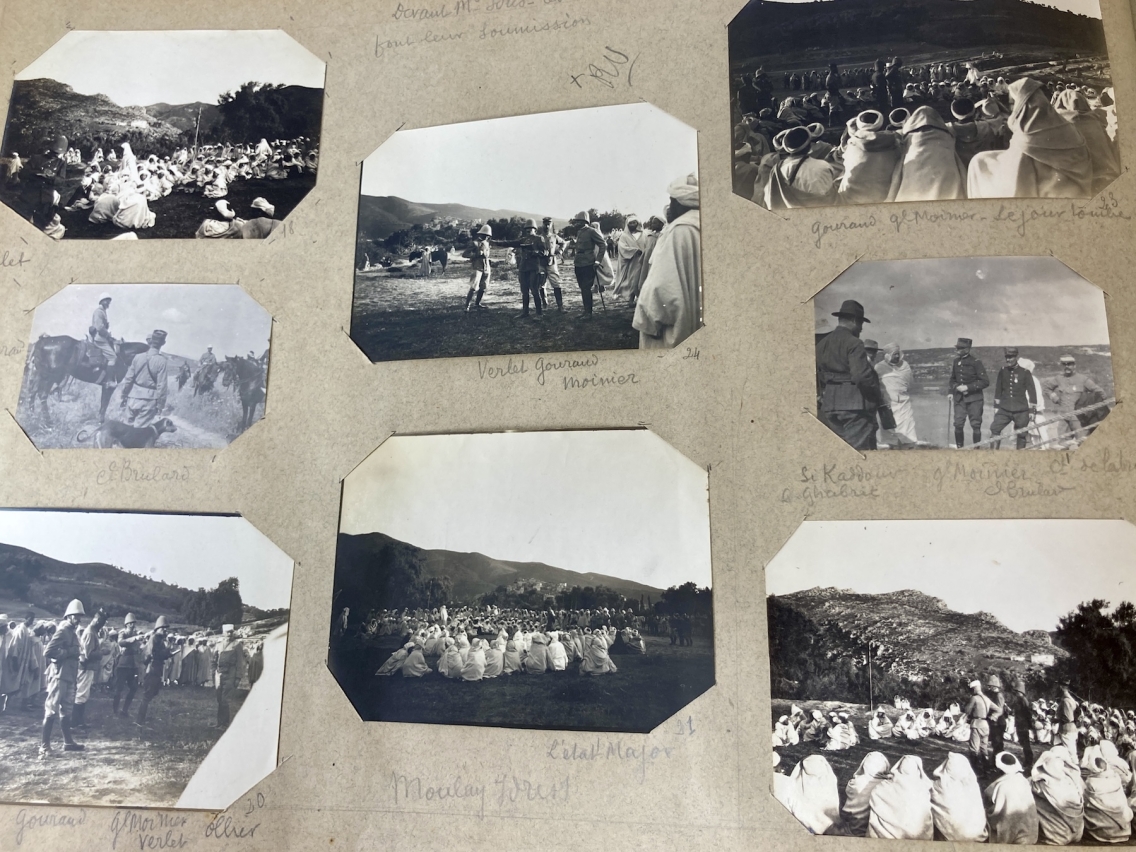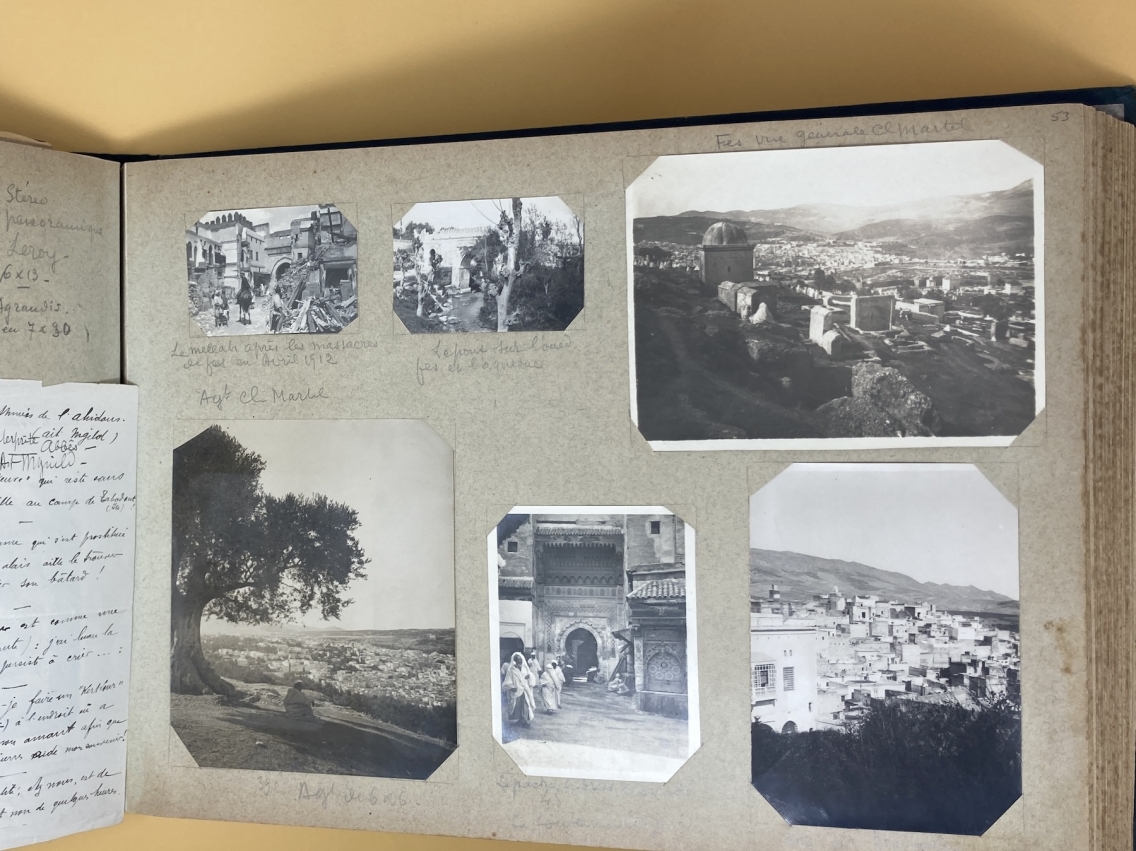The First Car in Morocco: Visual Representations During the French Conquest

In an independent study under Visiting Assistant Professor of French & Francophone Studies Peter Tarjanyi, Erik Budo Uerkwitz ‘26 translated the captions of two photo albums compiled by Maurice Bernard, an officer of the Fez Column, who served in the first “Bureau des Renseignements” in Fez – the institution that governed the Moroccan population during the French invasion of Morocco.

This project has examined two French photo albums (1911-1919) from the Moroccan Protectorate as both historical artifacts and tools of colonial propaganda. By analyzing their content, captions, and omissions, I explore how these albums shaped narratives of French dominance while erasing resistance and Moroccan agency, such as the exclusion of the Zaian War. The photographs portray Moroccan landmarks and people through a colonial lens, emphasizing exoticism and French superiority. However, they also inadvertently preserve traces of Moroccan resilience and cultural vitality. This work highlights the duality of these albums as both curated propaganda and rare historical documents, encouraging viewers to critically engage with the images and reconsider how visual media shapes our understanding of colonial history.

As people consider these images, I invite them to look at the albums with two perspectives. The first is with a lens of appreciation for Moroccan culture despite instability as a result of colonialism. While the albums may have been deliberately curated in a way to erase what truly happened on Moroccan soil, there are undoubtedly accurate representations of Moroccan life at the time that have been previously unseen. The other lens is more critical: major events at the time, such as the aforementioned Zaian war, are completely erased from history in so far as the albums are concerned. Together, these perspectives provide a more nuanced understanding of the albums’ significance. They are not just records of a colonial narrative but also artifacts that allow us to uncover layers of Moroccan history that have been hidden or distorted. By appreciating the cultural richness captured in these images while also questioning their omissions and biases, we can better understand the complexities of Morocco’s past.

Visit Special Collections to view these photo albums and read Erik’s accompanying translations!


